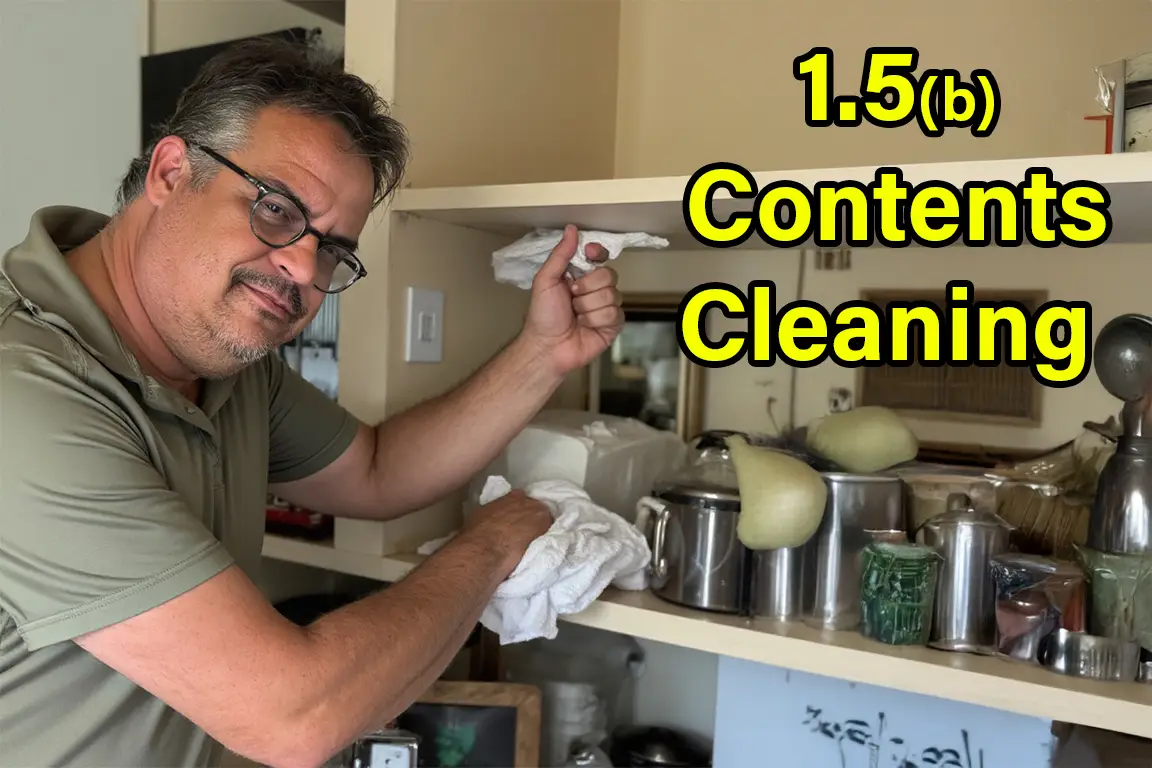What to Keep, Clean, Store, or Discard
Introduction
Sorting through your belongings after mold exposure is often one of the most emotionally and logistically difficult steps in recovery. The process can feel overwhelming—but using a clear decision-making system helps bring focus, peace of mind, and momentum.
In this lesson, you’ll learn how to evaluate each item using a step-by-step filter, apply a practical cleaning matrix, and organize your decisions with clarity and confidence.
Step 1: Use a Three-Part Filter to Evaluate Each Item
Apply this simple triage system to each item:
1. Level of Contamination
- Condition 1: Stored in a closed space, no known exposure – minimal concern
- Condition 2: Exposed to contaminated air – likely a candidate for cleaning
- Condition 3: Visible mold or musty odor – consider discarding
2. Material Type
- Non-porous: Glass, metal, ceramic – easy to clean
- Semi-porous: Finished wood, leather – may be cleanable
- Porous: Fabric, cardboard, unsealed wood – difficult to clean
- Cushioned porous: Pillows, upholstery, mattresses – usually not salvageable
3. Value to You
- Low value: Easily replaced
- High value: Costly or hard to replace
- Sentimental value: Emotionally meaningful or irreplaceable
Tip: If an item includes both porous and non-porous materials, classify it based on the most porous component.
Step 2: Use the Contents Cleaning Matrix
This simple decision matrix helps you make quick, confident choices:
| Material Type | Low Value | High Value | Sentimental |
|---|---|---|---|
| Solid | Discard or clean easily | Clean with confidence | Clean and store carefully |
| Semi-Porous | Consider discarding or clean with effort | Attempt to clean | Store, then clean later |
| Porous | Usually discard | Try only if essential | Consider digitizing or professional input |
Visual Labeling System:
- 🟢 Green: Keep and clean now
- 🟡 Yellow: Clean and store for later
- 🔴 Red: Discard
Use sticky notes or color-coded tape to help visually organize your sorting process.
Step 3: Apply the Keep–Store–Discard System
🟢 Keep and Clean Now
- Non-porous or washable items without visible mold
- Essential daily-use items (cookware, clothing, electronics)
🟡 Store for Later Evaluation
- Semi-porous or sentimental items that cause mild reactions or uncertainty
- Clean these first, then seal in labeled bins and store in a dry, low-humidity location
- Reintroduce one at a time once your health and environment stabilize
🔴 Let Go Without Guilt
- Cushioned porous items with visible mold or strong odor
- Fabrics, paper goods, or porous materials that cause symptoms after cleaning
- Any item you’re afraid to use or feel anxious about keeping
Reminder: Letting go is not a failure—it’s an act of self-protection and healing.
Step 4: Organize and Track Your Progress
Use the following tools to make the process easier and more organized:
- Colored Tags or Tape: Mark items clearly using your red-yellow-green system
- Digital Inventory: Keep a list of stored or discarded items (this can also help with insurance claims or replacements)
- Testing (Optional): If unsure about a high-value item, you may consider ERMI, HERTSMI-2, or mycotoxin testing—but keep in mind this can be expensive, and your symptoms are often the best guide
Pro Tip: Don’t do it all at once. Go room by room or box by box. Take breaks, drink water, and pace yourself.
Final Thoughts
This is more than just a cleaning step—it’s an emotional process. It’s completely normal to feel sadness, frustration, or grief as you part with belongings. But remember: letting go creates space for healing.
The things that matter most—your health, your peace, your future—aren’t stored in objects. They’re in the life you’re rebuilding, one decision at a time.

